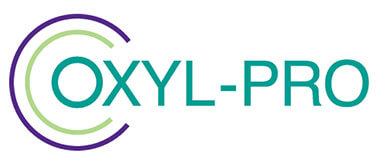Legionella
Legionella is the bacteria that causes legionnaires’ disease, which is a severe form of pneumonia. People contract legionnaires’ disease by breathing in tiny droplets of contaminated water in the air.
Because legionella can grow and thrive in man-made water systems, it is important to put controls in place to prevent this from happening and reduce the risk of causing illness.
One of the key measures in legionella control is disinfecting water supply and storage systems.
Employers, building owners and managers and landlords must understand the health risks associated with legionella and act to control them.
What is Legionella?
The bacteria Legionella pneumophila is widespread in water systems. In natural settings such as lakes, streams and rivers, it is in low concentrations and in conditions where it is unlikely to cause illness.
However, it is in man-made water systems that legionella can grow and spread, creating a significant risk for people contracting legionnaires’ disease.
Legionella is a gram-negative strain of bacteria, which makes it more resistant to drugs and antibiotic treatments.
When people get legionnaire’s disease, it is usually from inhaling tiny droplets of water contaminated with the bacteria. The disease affects the lungs and can cause difficulty in breathing.
Untreated, it can lead to organ failure from damaged lungs being unable to pump sufficient blood around the body.
Certain groups are more at risk from the effects of legionnaires’ disease.
These include:
• People over 45 years old
• Smokers
• Heavy drinkers
• People with underlying health conditions
• People with weak immune systems.
Symptoms of legionnaires’ disease include coughing, difficulty in breathing, chest pain, fever and aching muscles.
With treatment, people will recover from legionnaire’s disease, but it can also be fatal if left untreated, or where it occurs in vulnerable people.
Where are You Most Likely to Find Legionella?
Man-made water systems can provide the perfect conditions in which legionella can grow and multiply.
You can find legionella in:
• Taps and showers
• Plumbing and pipework
• Cooling towers and cooling systems
• Humidifiers
• Hot water and cold water systems
• Thermal spas and hot tubs
• Fountains.
Certain industries and businesses are more at risk from legionella.
For example, nursing and care homes are likely to have complex plumbing systems where legionella can grow. Coupled with this is a population that is more vulnerable to the effects of legionnaires’ disease.
Hospital and healthcare facilities also contain vulnerable patients while having water systems where legionella can take hold.
In hospitality and leisure, many venues and facilities will have complex water systems and services in which warm water circulates, such as spas. Many of these facilities will also have prolonged periods where water systems are inactive. This encourages legionella growth.
Industrial and manufacturing facilities use water systems for processing, such as cooling towers, which emit fine spray. These are therefore also potential sites for legionella contamination.
Private landlords must also manage legionella risk in the properties they let. If properties stand empty for periods, then this can increase the risk.
Some workplace conditions will create a foreseeable risk of legionella, and these include:
• Circulation of water as part of a system
• Water temperatures between 20°C and 45°C
• Water containing nutrient sources such as rust, sludge and scale
• Water that emits aerosol or fine spray into the air
• Conditions that encourage bacterial growth
• Environments where there are people more vulnerable to infections.
How Do You Detect Legionella?
You can test for legionella in water systems. An appointed competent person must carry out this testing.
This is normally a water treatment professional.
The first stage in testing for legionella is taking samples from your water system. This testing must be compliant with BS 7592.
The appointed person will take samples either as liquid, in a sealed sample bottle, or as a swab.
The next stage is to test these samples under UKAS-accredited laboratory conditions.
There are three methods for testing to detect legionella:
• The culture method detects legionella colonies on a buffered charcoal yeast extract, BCYE agar
• Polymerase chain reaction (PCR) amplifies small segments of DNA taken from the sample to detect legionella
• A direct fluorescent antibody (DFA) test uses fluorescence microscopy to detect the presence of specific antigens.
How Do You Control and Prevent Legionella?
Controlling and preventing legionella requires a multi-tiered approach.
The first thing to do is look at your water system and see if you can make changes to minimise or reduce legionella risk.
Is the pipework as short and direct as possible? What materials is it made of? Some materials are more resistant to legionella growth. Good insulation is important too.
Any part of the system where water can lie undisturbed contains a potential legionella risk. Where there are dead legs or dead ends in the system, try and remove them.
Temperature control is another key measure. Ideally, cold water should be at under 20°C, while hot water storage should be at a minimum of 60°C, with distribution at 50°C or greater.
Where there are storage tanks, make sure you keep them covered with lids.
The next important stage is to prevent the build-up of biofilm inside the pipes of your water system. Biofilm is a slimy material that protects bacteria and enables them to grow and multiply.
An effective disinfectant will remove biofilm and prevent its growth, which then helps prevent the development and spread of legionella and other pathogens.
Oxyl-Pro for Legionella Control
Oxyl-Pro is a multi-purpose disinfectant and water treatment agent.
It is proven to be effective in eliminating and preventing biofilm, and is HSE-recognised as an alternative for L8 disinfection.
Oxyl-Pro can be central to an effective strategy for controlling legionella and managing legionella risk effectively.
For more information about Oxyl-Pro for water treatment and controlling legionella, please complete our contact form, call us on +44 1606 851 782, or email enquiries@oxyl-pro.com
